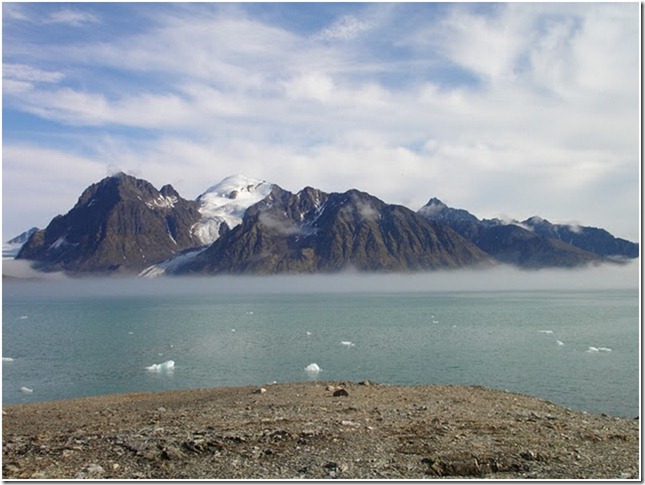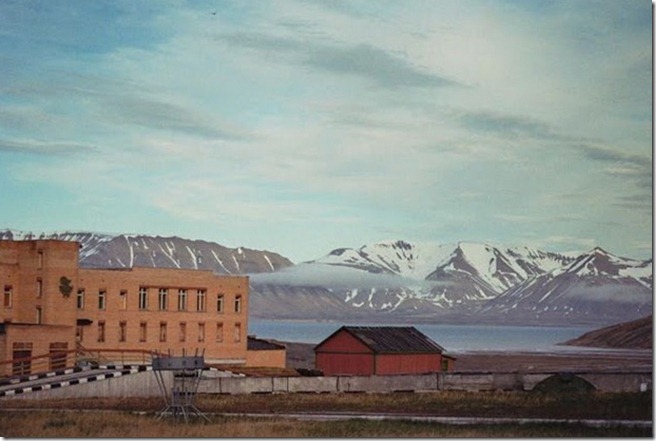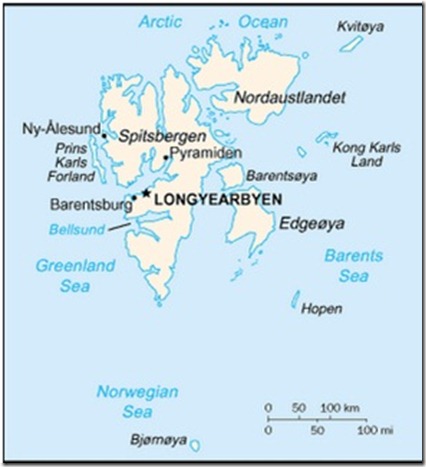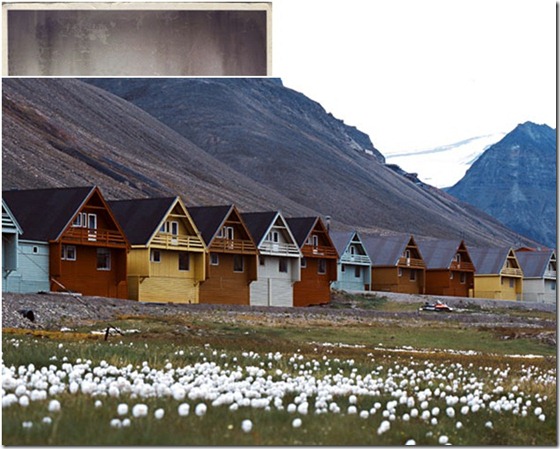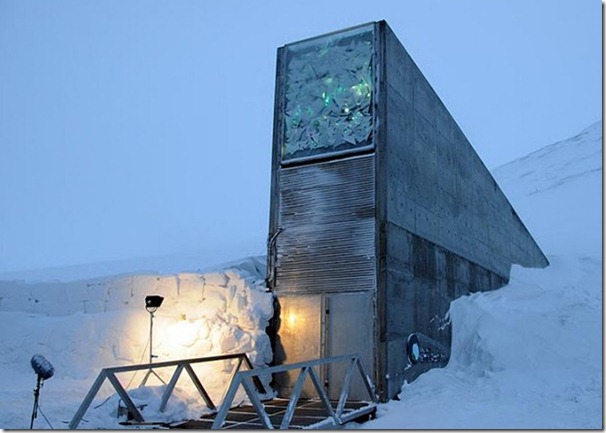
babel_vs_murudeshwar_temple.jpg

global_laylines.jpg

history_buried_pyramid.jpg

history_pyramid_gates1.jpg

history_pyramid_gates2.jpg

power_pyramid.png

pyramid_physioelectricity.jpg

pyramiden_spitsbergen_1928.jpg
Pyramiden: The ghost town at the end of the world, abandoned in 1998, whose motive remains a mystery to this day
Svalbard, a remote island, but full of stories
The Official History
Pyramiden was for more than 80 years the northernmost city with a fixed population in the world. Located on the Norwegian island of Svalbard, at the impressive latitude of 79°, it was owned by a Russian coal mining company, where, together with the villages of Barentsberg and Grumant, it extracted the precious coal that heated the homes of Russian families from within the icy mountains of the Arctic. for several decades.
Location of the Norwegian island of Svalbard
Pyramiden was built to be an example of how a socialist model could work. Free food, cinemas, theaters, sports courts, schools and a library with more than 50,000 volumes were some of the benefits of its thousands of inhabitants during its heyday.
Speedboat dropped off at Pyramidens
abandoned building
In cinema, Projectors remain untouched. Even rolls of film are in the machines
The imposing facade of one of the buildings, with the ubiquitous bust of Lenin
more buildings
Sports complex entrance
Monument symbolizing the foundation of the city
abandoned truck
Another monument indicating the location, on the 79th parallel. The northernmost city on the planet
Telephone
Another one of the great Soviet buildings in Pyramiden
Buildings with the unmistakable Soviet style contrasted with the rocky walls and deserted beaches, inhabited by no less than 3,000 polar bears.
Polar bears are a constant presence on the island. On Svalbard, you only go out to carry a gun
However, like most Kremlin-subsidized projects, the collapse of the Soviet system during the 1990s ended up closing the "Pearl of the Arctic". No big deal if it weren't for the way it was deactivated: One morning in 1998, sudden warning was given for all workers to pack their bags as the island would be abandoned immediately.
The retreat was so quick that the miners left even their boots behind.
Due to the isolation of the place, until today the city is perfectly preserved, with many buildings perfectly habitable, except for the lack of heating.
The Unofficial Version
But some don't believe the official version of the story, and insist that Pyramiden was evacuated as it was just a " facade" built by the Russians to explore a strange portal that would have been found on the island in 1928.
A very controversial photo released in 2009 shows a strange beehive-like construction in the middle of the ice, which would be the gates to a city built by an unknown civilization.
On the back of the photo, the following inscription can be read (in Russian):
"Our last solemn moment, before we bury the gate and the whole truth with it. Pyramiden, Spitsbergen, 1928
Why did the Soviets bury the gates found in 1928 forever? Officially the name of the city would be due to the shape of its main mountain. Could this be the reason?
It's obvious that this story seems to have a lot more of sensationalism than hard facts, but I found at least a very
interesting story
Svalbard Today
The city of Longyearbyen remains inhabited, and despite having only 1700 inhabitants, it has an Airport, Shopping Mall, Cinema, Hotel and a University (University of the Arctic)
Longyearben, the northernmost administrative capital on the planet
See more photos at
http://www.skyscrapercity.com/showthread.php?t=381875
Despite Pyramiden being evacuated, the island of Svalbard still has about 1,700 permanent inhabitants in the Norwegian city of Longyearbyen, the only inhabited point on the island that was not bought by the same company that took care of Pyramiden: the Soviet State Trust Arctikugol , which bought 3 villages in the early 1930s (coincidentally a date very close to 1928). Would simple coal mines be enough reasons for the Soviets to create a capitalist company to acquire 3 villas on a remote island belonging to another country?
The Pyramiden Mines
What stories do they hide?
It is speculated that the "ghost town" of Pyramiden is being prepared to receive tourists. Perhaps it is the rebirth of the "City at the End of the World". Are Russia and Norway preparing to release one of the most sensational archaeological discoveries in history? Time will tell...
Another curiosity about Svalbard
It was this remote Norwegian island that the UN chose to be the storage silo for all the known seeds on the planet, in case some natural disaster destroys some of these species. The "Global Seed Vault" is a super modern "Bunker" built embedded in rock, in the midst of Arctic ice especially for this task.
Entrance to the "Global Seed Vault" on Svalbard
Illustration showing the "Global Seed Vault" from the inside
Agreement prepares funds to conserve plant genetics
The Global Seed Silo of Svalbard, Norway, is regarded as the Noah's Ark of the world's plants
photo: nature
Natasha Gilbert
from Nature
An international agreement aimed at protecting and improving access to the world's plant genetic resources is set to distribute its first batch of research funds this week, amid cash-flow problems that could jeopardize future funding.
The funds, which will support research into new plant varieties and conservation efforts by developing countries, mark the fifth anniversary of the adoption of the United Nations Food and Agricultural Organization's International Treaty on Plant Genetic Resources for Food and Agriculture.
The treaty is best known for its role in enabling the construction of Norway's Svalbard Global Seed Silo - an underground cavern that contains a stockpile of seeds from the world's plants.
Some 120 countries are parties to the treaty and those that have ratified it are legally authorized to transmit genetic information about some 64 of the world's most important plants for consumption, including potatoes and wheat - making the information freely available to researchers, plant geneticists and farmers. This information can be stored in gene banks or in the form of plants grown in a farmer's field, for example.
The treaty also provides financial support to farming communities in the developing world. This means that these countries can afford to maintain the cultivation of traditional and more genetically diverse plants, rather than abandoning them in favor of modern and improved - but also uniform - varieties.
Maintaining diversity is essential for researchers and plant geneticists looking for crops that can withstand the effects of climate change or new diseases.
Waiting time
At a meeting this week in Tunis, Tunisia, the treaty's board of directors is expected to donate a total of $250,000 to
about four to seven plant research and conservation projects. For example, one of the projects that requested funding
comes from an agricultural community in the Andes of Peru, an area that has the highest potato diversity index in the
world. They hope the funding will help them adapt their growing strategies to the ever-higher temperatures they are
experiencing as a result of climate change.
The treaty is now facing financial challenges, says Shakeel Bhatti, secretary of the board. Its long-term objective is to generate funds for research and conservation projects through revenue from the commercialization of products, such as new plant varieties, developed using genetic material obtained under the treaty. Anyone who makes use of the treaty's genetic material in patented and marketed products must agree to give back to the fund 1.1% of product sales.
"There's a wait time of about 10 to 15 years before a commercial product is developed and royalties start flowing in," says Bhatti. The treaty also relies on donations from participating countries, companies and charities. But so far, only Norway, Spain, Italy and Switzerland have contributed. As a result, the fund currently has US$500,000, which means that only a portion of the 500 projects (which total US$20 million) can be financed.
Bhatti says limited funding for research and conservation is "a major concern" for the world's food safety in the future. He will seek an agreement with the treaty's board at this week's meeting to launch a campaign aimed at raising $116 million over the next five years.
Global gene pool
Countries that are party to the treaty have created 1.1 million available genetic samples through it and around 200,000
exchanges of genetic material take place every year - showing that the treaty has been a success so far, he says. Bert
Visser, director of the Center for Genetic Resources in Wageningen, Netherlands. "The treaty allowed for the creation of
a global gene pool," he says.
David Ellis, curator of the Plant Genetic Resources Preservation Program at the US Department of Agriculture's research service, says it has become "standard practice to access and exchange genetic material through the treaty." He adds that the treaty has also been helpful in clarifying the terms and conditions under which profit can be made from material that is exchanged. The United States is a signatory to the treaty but has not yet ratified it.
No country's plant-growing or research effort would get very far without the ability to access and utilize the world's genetic resources, Visser says, "Everyone needs something from others."
Translation: Amy Translations
UFOADVANCE – MYSTERIES
pyramiden_splitsbergen_1928.md

pyramids_around_the_world.jpg

pyramids_over_limestone.jpg

sound.jpg

stargate_ra.jpg

upsidedown.jpg

upsidedown2.jpg

wormhole.jpg

